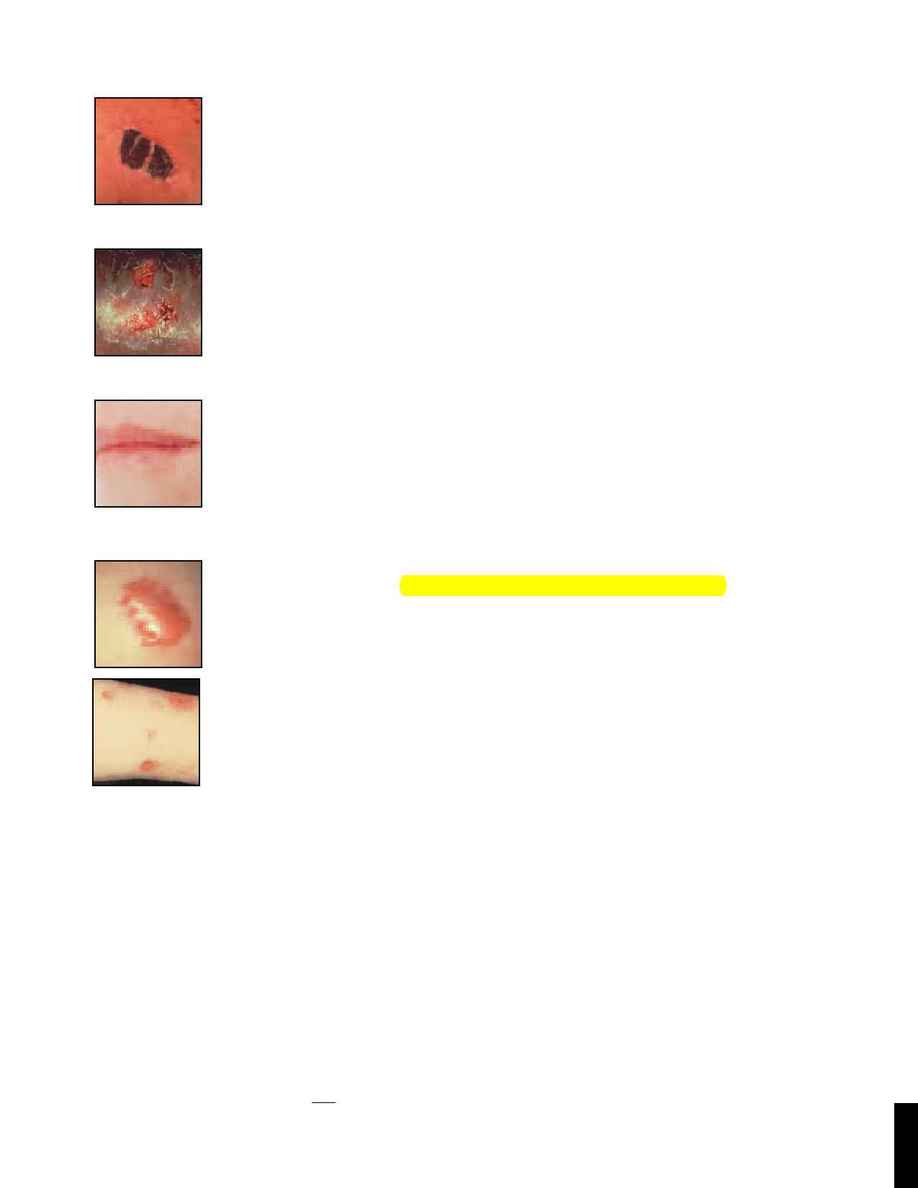
1
5
Crusts are dried masses that are the remains of an oozing sore. The crusty material may
contain blood, pus, sebum, epithelial tissue and bacterial debris.
The scab on a sore is an example of a crust.
Excoriations are mechanical abrasions to the epidermis (or injuries to the epidermis). They
appear bright to dark red, because of dried blood, and occur when an insect bite or
a scab is scratched.
Scratches to the surface of the skin are considered excoriations.
Fissures are cracks in the skin. They usually appear as cracks or lines that may go as deep as the
underlying dermis. They may be dry or moist. These lesions often occur when skin
loses its flexibility due to exposure to wind, cold, water, etc.
Chapped lips are one example of a fissure.
Scars are formations resulting from a lesion, which extend into the dermis or deeper, as part of
the normal healing process. Scars are permanent; however, they generally become
less noticeable with time. A scar is also called a cicatrix (SIK-uh-triks).
The size and shape of a scar are dependent upon the extent of the original injury.
Keloids are thick scars.
Ulcers* are open lesions visible on the skin surface that may result in the loss
of portions of the dermis and may be accompanied by pus.
Hypertrophies (New Growth)
Hypertrophies are identified by an overgrowth or excess of skin.
Callus (sometimes called hyperkeratosis or keratoma) is a thickening of the epidermis,
which occurs from pressure and friction applied to the skin.
Verruca* is a name given to a variety of warts. Warts are caused by a virus, can be contagious,
and can spread all over the body. A dermatologist or medical doctor should be consulted for removal
of warts. Warts are referred to as the most common tumor.
Skin tags are small elevated growths of skin, which can easily be removed by a physician.
*Indicates that services may not be performed.
611
THE STUDY OF SKIN
